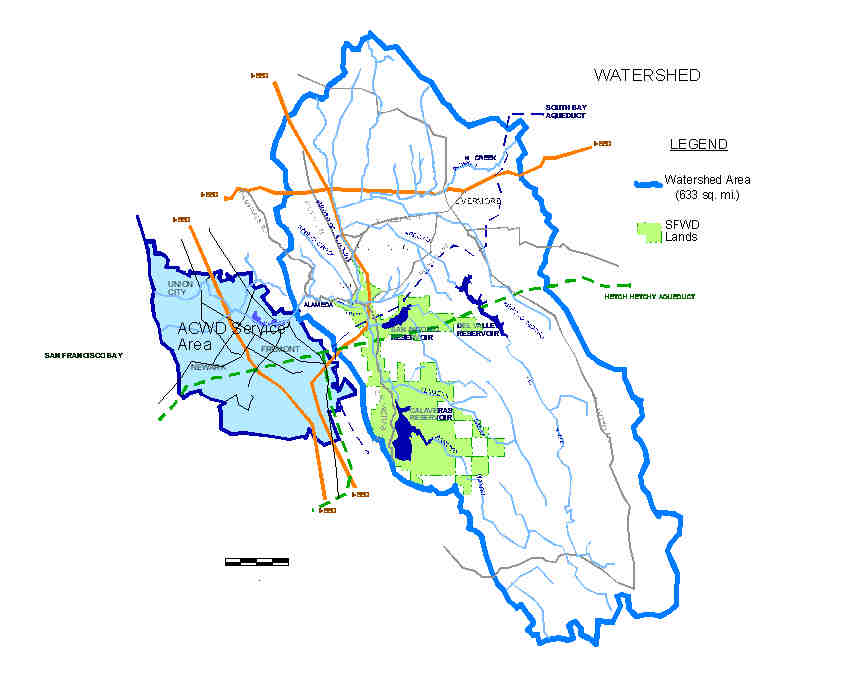
Alameda Creek: An Irreplaceable Resource
On November 5, 1769, a small band of men under the charge of
Sergeant Jose Francisco de Ortega set out to explore the eastern shore of San
Francisco Bay. After moving down the western side of the bay from near the
present site of Woodside, Juan Crespi, a member of the group, wrote that they
forded the Guadalupe River and "...went forward on the other side of the
estuary eight or ten leagues... We came upon another very large stream with a
very strong current, and its bed was also wooded and its course was through a
great plain which was also quite wooded." The "very large stream"
was, in all probability, Alameda Creek.
Although the land around it has changed dramatically since the time that Ortega’s small group set eyes upon it, Alameda Creek is today one of the most important natural features in the Tri-City area. From its origin in the hills east of San Jose, it meanders for more than 40 miles before meeting San Francisco Bay. Along the way it provides wildlife habitat, a conduit for flood waters, a place for recreation and a host of aesthetic and environmental values.
Water flowing down Alameda Creek eventually reaches San
Francisco Bay or becomes part of Fremont, Union City, and Newark’s groundwater
supply.
The picture below shows the Alameda Creek Watershed

The Alameda Creek Watershed consists of two basins. The Upper Basin includes the Livermore Drainage Unit and the Sunol Drainage Unit. The Lower Basin is a tributary area between San Francisco Bay and the Berkeley Hills. ACWD’s focus lies within the Upper Basin, the runoff from which affects the ACWD groundwater basin.
Geographically, the watershed covers an area of 633 square miles. The major drainage streams of the Livermore Drainage Unit (388 square miles) include Arroyo del Valle, Arroyo las Positas, Mocho, Alamo, San Ramon, and Tassajara Creeks, which are tributary to Arroyo de la Laguna. The Sunol Drainage Unit has a total area of 245 square miles and includes the Sinbad and Sunol uplands, Sunol, Vallecitos and La Costa Valleys, and Sunol Highland. Its major streams are Arroyo Hondo and Calaveras Creek, which are tributary to Alameda Creek.